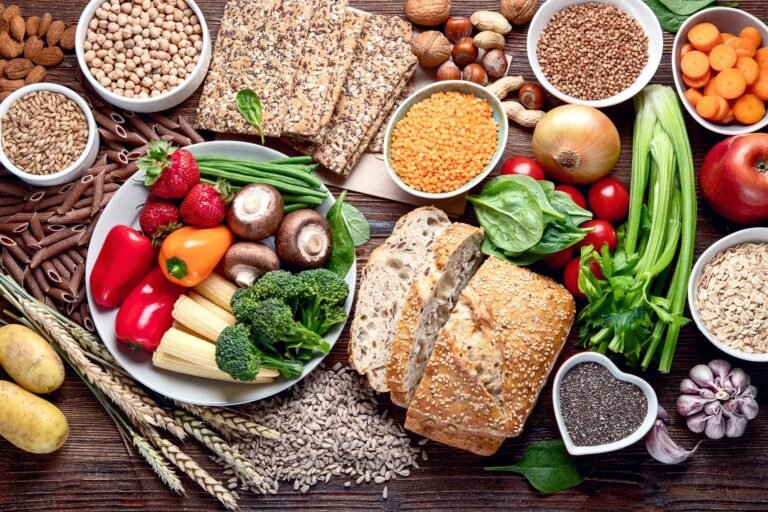Tryptophan is an essential amino acid in the human diet that is broken down by gut microorganisms, which convert it into multiple metabolites that have various effects on human health. A recent study published in the journal Nature Microbiology examines tryptophan metabolism in response to increased dietary fiber intake.
Study: Dietary fiber directs microbial tryptophan metabolism through metabolic interactions in gut microbiota. Image credit: Tatjana Baibakova / Shutterstock.com
Metabolism of tryptophan in the intestine
In the gastrointestinal tract, tryptophan is broken down into indole, indole lactic acid (ILA) or indole propionic acid (IPA). High indole levels are associated with chronic kidney disease, while ILA has protective effects against food allergies. IPA is inversely associated with type 2 diabetes and has been shown to benefit gut mucosal integrity and reduce the risk of atherosclerosis.
Other tryptophan metabolites maintain epithelial barriers and immune function, regulate inflammation and key metabolic pathways, and provide protection against infectious diseases. Instead, some molecules, such as indole, are metabolized by the liver into a toxin that accumulates in chronic kidney disease, subsequently worsening the condition. High levels of indole in the gut also increase the risk of persistence Clostridium difficile colon infection.
Indole is the most abundant tryptophan metabolite in humans and mice, constituting up to 75% of all tryptophan metabolites. Many microorganisms catalyze tryptophan to indole via tryptophanase or to ILA/IPA via other pathways.
Several studies have suggested the benefits of dietary fiber in reducing the breakdown of proteins into toxic byproducts by colonic microbes. Dietary fiber also increases the transport of food through the gut, which increases the availability of carbohydrates in the colon, ultimately preventing protein catabolism.
Recent studies have shown a possible correlation between fermentable fiber intake and tryptophan metabolism. The current experimental study seeks to investigate the role of fermentable carbohydrates in intestinal tryptophan metabolism.
About the study
The researchers conducted in vitro and in vivo mouse experiments to assess the competition between gut microbes for tryptophan as a substrate and its metabolic end products.
C. sporogenes, P. anaerobius, B. thetaiotaomicronand E. coli were selected as representative bacterial strains to study the gut microbiome in vitro in vitro environment. These findings were then compared to experiments conducted using complex microbial communities isolated from human faecal samples.
What did the study show?
In the model of the three communities both in vivo and in vitro experiments showed that E. coli competed with G. Sporogenis to metabolize tryptophan. E. coli produces indole, whereas C. sporogenes produces ILA and IPA.
Carbohydrate supplementation, even at low concentrations, inhibits E. coli tryptophanase activity by two- to fourfold, subsequently reducing indole production. C. sporogenes did not use carbohydrates, even when supplemented with fivefold to tenfold concentrations of glucose, thus indicating its preference for amino acids.
These findings indicate that the competition between E. coli and C. sporogenes is influenced by the availability of carbohydrates in the growth medium rather than by the abundance of tryptophan-metabolizing bacteria.
While simple sugars in the diet do not reach the large intestine, they do come from the breakdown of dietary fiber. When pectin, a complex carbohydrate, was added to the growth medium, Bacteroides thetaiotamicron it broke down the pectin into simple sugars, causing it to cross-link E. coli.
Pectin supplements were up-regulated E. coli genes, which regulate the use of fiber breakdown products by 16- to 64-fold. This resulted in lower indole levels without any change E. coli abundance, as E. coli showed a preference for simple sugars compared to tryptophan.
While the abundance of C. sporogenes decreased with pectin consumption, ILA and IPA levels increased as more tryptophan became available C. sporogenes. In addition, inhibition of indole production significantly increased available tryptophan for other metabolic pathways in the gut.
Human faecal cultures showed similar effects, thus supporting the observation that indole levels decrease with increased dietary fiber intake. When the fecal microbiome was transplanted into gnotobiotic mice, the results were similar, demonstrating that dietary fiber suppresses indole production by several gut species.
Implications for human health
Our findings explain why consuming fermentable fiber suppresses indole production but promotes the generation of other tryptophan metabolites associated with health benefits.”
The availability of microbial substrates and fermentable carbohydrates in the gut influences the direction of tryptophan metabolism. As a result, the relative abundance of tryptophan metabolites is altered through their effects on specific bacterial species.
The study’s findings have profound implications for dietary recommendations aimed at improving gut health and preventing the development of metabolic disorders. Increased consumption of fermentable fiber can lead to a shift in gut microbial metabolism that increases the production of metabolites that support gut mucosal integrity, immunity, and metabolic health.
Journal Reference:
- Sinha, AK, Laursen, MF, Brinck, JE, et al. (2024). Dietary fiber directs microbial tryptophan metabolism through metabolic interactions in the gut microbiota. Nature Microbiology. doi:10.1038/s41564-024-01737-3.
